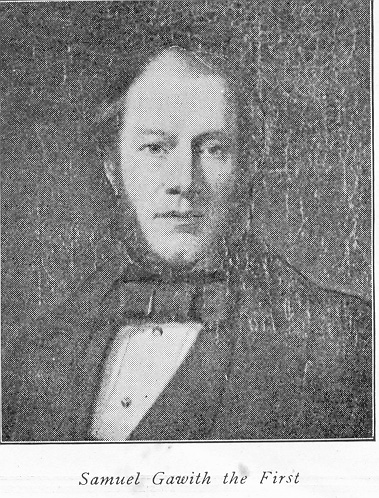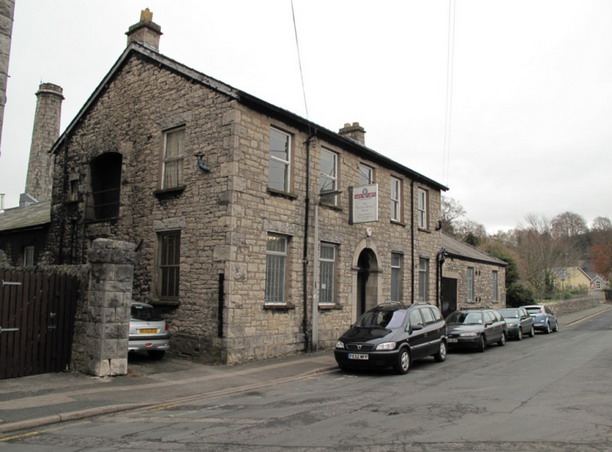Samuel Gawith History
Una qualità che viene da lontano

Sembrerà strano, ma la curiosa storia del tabacco Gawith non comincia con un Gawith, ma un Kendaliano intraprendente di nome Thomas Harrison che, visto il crescente interesse popolare per i tabacchi trinciati e lo snuff, decise di trasferirsi a Glasgow per imparare il mestiere.
Tornò a Kendal tra le verdi vallate, i monti e i laghi della sua Cumbria, una tra le più suggestive regioni dell’Inghilterra, nel 1792 non solo con le conoscenze acquisite, ma anche con le attrezzature necessarie per metterle in pratica. Aveva infatti comprato in Scozia circa 50 tonnellate di macchinari di seconda mano, prodotti intorno al 1750, e le aveva faticosamente trasportate, con i mezzi dell’epoca, in un mulino a Mealbank, sul fiume Mint, alcune miglia a nord est del centro di Kendal. Va detto per inciso che, anche se l’edificio scomparve circa cinquant’anni fa, alcuni degli storici macchinari sono ancora intatti e vengono utilizzati tutt’ora alla Brown House per la produzioni degli eccezionali tabacchi Gawith.
Sull’argomento, nel 1965, il periodico commerciale ed industriale “Design and Components in Engineering” giudicò lo stabilimento come il più grande impianto industriale dell’epoca ancora in attività con una produzione regolare.
Ma lasciamo i macchinari e torniamo alle persone che diedero inizio all’attività. Thomas Harrison pare essere entrato in affari con un tale Thomas Brocklebank, un “chimico – farmacista” sempre di Kendal. A quei tempi, va detto che il tabacco da pipa e lo snuff venivano venduti appunto da chimici e farmacisti e si può presumere che la società sia stata divisa in parti eguali: uno produceva e l’altro commercializzava.
Nel 1793 era nato intanto ad Harrison il figlio Thomas II° che subentrerà poi, alla morte del padre, nell’attività dell’azienda e acquisterà al 27 di Lowther Street, circa nel 1830, l’immobile che diventerà residenza di famiglia e fabbrica, come era abitudine del tempo.

Ma arriviamo finalmente a Gawith.
Nel 1837, la figlia di Thomas Harrison II°, Jane si innamorò di un “idraulico e vetraio” di Kendal, appunto Samuel Gawith. I due si sposarono a Gretna Green il 15 gennaio 1838. Tre anni dopo Thomas Harrison II° morì prematuramente, lasciando le sue azioni in “Harrison e Brocklebank”, a Jane e a sua sorella Ann. Come logico Samuel abbandonò il suo vecchio lavoro e si trasferì con Jane in Lowther Street per continuare l’attività del suocero insieme al vecchio Brocklebank.
Nel 1842 nacque poi Samuel Gawith II°. A metà degli anni ’40 Thomas Brocklebank morì. Così quando Ann Harrison scomparve a sua volta nel 1852, la proprietà del 27 di Lowther Street e l’intera attività fini nelle mani di Samuel Gawith. Ma la storia di Samuel e sua moglie Jane non fu felice. Morirono a poca distanza di tempo l’uno dall’altra lasciando i propri interessi e i beni della famiglia, nelle mani di 3 amministratori e successivamente a due figli: Samuel II° e John Edward.

Tornando a Samuel Gawith.
La società tra i due fratelli funzionò per anni, ma venne il momento in cui Samuel e John (come accade nelle migliori famiglie) decisero di dividersi. Gli impianti di Lowther Street passarono a John E. Gawith ed il mulino di Meal Bank a Samuel. Samuel concentrò le sue attenzioni sullo snuff e John inizialmente sul “twist” ma passò presto anche alla produzione di snuff, e acquistò un mulino ad acqua a Low Mills a sud di Kendal. Probabilmente fu questa rapida espansione che portò al fallimento di John nel 1885 quando Samuel comprò gli impianti di John, marchi di fabbrica ecc… John morì sette anni più tardi, nel 1892, cento anni dopo che Thomas Harrison si era stabilito a Meal Bank.
Il 27 novembre 1886, a 44 anni, Samuele Gawith II° morì dopo avere avuto dalla moglie un figlio chiamato Samuel Anderson Gawith. La bandiera sul Municipio sventolò quel giorno a mezz’asta come segno di rispetto. Rispetto, non necessariamente o solamente dovuto al suo successo come uomo d’affari locale, ma anche come membro del “Westmorland Volontary Rifles”, un precursore dell’attuale Esercito Territoriale.
Il bambino aveva però solo due anni e cinque mesi alla morte del padre, ed ancora una volta la società fu messa nelle mani di amministratori, tutti comunque della famiglia. Divergenze tra loro portarono alla costituzione della ditta Gawith Hoggart TT di cui Samuel III° prese il controllo intorno al 1904/05, in un momento di grande produzione durante la prima Guerra mondiale per soddisfare una richiesta sempre più crescente. È di quei giorni la famosa frase del Generale americano Pershing “Lei mi chiede cosa abbiamo bisogno per vincere questa guerra. Io rispondo tanto tabacco e tante pallottole”
Dal 1920 nuovi impianti si realizzarono in Sandes Avenue a Kendal e i macchinari furono trasferiti da Meal Bank e adattati alla motorizzazione elettrica, piuttosto che ad acqua. È dei primi anni ’30 un’ulteriore espansione dell’azienda, quando Samuel Gawith acquistò il mulino di tabacco situato a Eamont Bridge, nella periferia sud di Penrith. Questo era stato originalmente un mulino di mais, poi mulino di polvere da sparo infine dal 1835 un mulino di tabacco. Questo rimase in funzione fino al 1936-1937, quando, probabilmente a causa del dilagare delle sigarette dopo la prima Guerra mondiale, il mercato del tabacco entrò in crisi. Eamont Bridge e Sandes Avenue furono chiusi e ampliata la Kendal Brown House. Fu allora che il mulino originale venne smantellato, ma le attrezzature reinstallate tali e quali. Un indubbio tributo alla tradizione e all’arte e l’ingegnosità dei costruttori. Samuele Gawith III° morì nel 1953, lasciando la sua vedova Louie come Presidente e Derek Dakeyne-Cannon come Direttore Generale dell’azienda.
E ciò ci avvicina, dopo questa lunga narrazione, ai nostri giorni.
In un mondo in continua evoluzione, dominato dalla tecnologia. Per concludere convenendo che sono veramente rari i prodotti che possono vantare una simile storia alle spalle ed essere fabbricati ancor oggi con questo quasi religioso rispetto della tradizione come le numerose varietà di snuff, trinciati Virginia e Misture Inglesi prodotti dalla Casa di Samuel Gawith.
 |
 |
 |
Gallery completa dell’azienda Samuel Gawith al seguente link www.gustotabacco.it/azienda-samuel-gawith
Fonte:
STIL MAGAZINE di Novembre/Dicembre 2009
![]()
Samuel Gawith history
The history of the company begins, interestingly, not with a Gawith at all, but an enterprising Kendalian by the name of Thomas Harrison, who, aware of the popular interest, and associated commercial potential, of snuffs and tobaccos, removed himself to Glasgow to learn the trade of snuff making. He returned to Kendal in 1792 with not only knowledge of snuff making, but the means, also.
He had bought approximately 50 tons of second hand machinery, estimated to be manufactured around 1750, and transported it via packhorse, to a mill at Mealbank, on the river Mint, a few miles North East of the centre of Kendal. Although the building disappeared about fifty years ago, some of the machinery is still intact and in day-to-day use at the Brown House today. Indeed, in 1965, the industrial trade magazine “Design and Components in Engineering” judged it to be the oldest piece of industrial machinery still in regular production use – But enough about machinery, and back to the people who created the company. Shortly after establishing his new business, Thomas Harrison appears to have entered business with Thomas Brocklebank, a “chymist and druggist” of Kendal. At that time chemists would frequently sell tobacco and snuff (as opposed to those today who dispense nicotine patches!), so we can presume that the partnership was split evenly between production and retail. In this same year, 1793, Thomas Harrison’s namesaked son was born and effectively took over the business after his father’s death. Possibly it was this Thomas Harrison who bought 27 Lowther Street, around 1830, as both family residence and factory, as was the habit of the time.
By 1837, Thomas Harrison the second’s eldest child, Jane, reached 18 and had fallen in love with a “plumber and glazier” of Kendal, one Samuel Gawith. Apparently against her father’s wishes, the two married “over the anvil” at Gretna Green on 15 January 1838.
In 1841, Thomas Harrison died, leaving the premises, and his share in Harrison and Brocklebank, to Jane and her sister Ann. Consequently Samuel and Jane moved into Lowther Street, the former relinquishing his earlier trade and working alongside the elderly Thomas Brocklebank.
In 1842, Samuel Gawith (The Second) was born, and over the next 14 years 5 siblings followed. Somewhere in the mid 1840s Thomas Brocklebank passed away, and when Ann Harrison died in 1852, the ownership of 27 Lowther Street, and by now the whole of the business, fell to the hands of Samuel Gawith. Samuel Gawith left the business, and the well being of the family, in the hands of 3 trustees, as Samuel the Second, already active in the business, was only 22. The trustees were Samuel himself, Henry Hoggarth and John Illingworth.
Back to Samuel Gawith.
The partnership between the two brothers worked for some years, but, not for the first time in a family firm and surely not for the last, Samuel and John decided that they would be best served by not working in partnership anymore and on 31st March 1878 an “agreement of seperation” came into effect. The premises at Lowther Street, and the mill at Meal Bank were to be split and that Samuel Gawith was to have the choice of which to possess. Samuel chose the mill, and Lowther Street passed to John E. Gawith, Tobacco Manufacturer. Although the “Agreement of Separation” allowed Samuel and John to both produce tobacco and snuff, Samuel concentrated on snuff, John on “twist” tobacco. John, however, soon moved into production of snuff also, and acquired a water driven grinding plant at Low Mills, just South of Kendal. It was possibly this rapid overexpansion that contributed to John’s bankruptcy in 1885, at which Samuel bought John’s goodwill, trademarks etc. John died seven years later, in 1892, one hundred years after Thomas Harrison established himself at Meal Bank.
In 1884, Samuel’s Scottish wife gave birth to their first son, Samuel Anderson Gawith (Samuel the Third-his middle name coming from his mother’s maiden name), brother to four older sisters. Sadly, two years later, on November 27th, 1886, Samuel Gawith the Second died, aged 44. Apparently, the flag on the Town Hall flew at half-mast as a mark of respect.
Respect, not necessarily or solely from his success as a local businessman, but also as a member of the “Westmorland Volunteer Rifles”, a precursor to the present Territorial Army. Samuel the Third was two years and five months old at his father’s death, and once again the company was put in the hands of trustees, probably Samuel the Third’s mother, John Edward Gawith (who died six years later) and William Henry Gawith, Samuel the Second’s youngest brother.
A word here about William, who set up in rivalry to the Samuel Gawith dynasty, about the time John’s enterprise failed. He set up in partnership with Henry Hoggarth, whose sister he married. Together they purchased the Lowther Street tobacco factory, and made snuff at Marble Mills outside Kendal. The firm continues now as Gawith Hoggarth TT. Samuel the Third took control of the company about 1904/05, and saw it’s production increase during the First World War to meet growing demand – as the American General J.J. Pershing put it “You ask me what we need to win this war. I answer tobacco as much as bullets”
By 1920 new premises at Sandes Avenue, Kendal were opened, and the whole of the machinery transferred from Meal Bank, and adapted to power by electricity, rather than water. At some time in the early 1930’s there was further expansion, and Samuel Gawith took over the idyllically situated snuff mill of William Nevinson at Eamont Bridge, immediately south of Penrith. This had originally been a corn mill, then gunpowder mill, then from 1835 a snuff mill. This ran in operation until about 1936-7, when, probably as a result of the change from snuff taking to cigarette smoking immediately after the First World War, operations at Samuel Gawith’s were consolidated. Eamont Bridge and Sandes Avenue were closed and the Kendal Brown House expanded. For at least it’s third time, the original four-pestle mill was dismantled, moved and re-instated. A tribute, indeed, to the undoubted craftsmanship and ingenuity of it’s constructors. Samuel Gawith the Third passed away in 1953, leaving his widow Louie as Chairman and Derek Dakeyne- Cannon as Managing Director.
And that brings us to the present time. In a shrinking world, ruled by technology, few enough products are manufactured in such a time-honoured and traditional way as the many varied snuffs and tobaccos of the House of Samuel Gawith.

